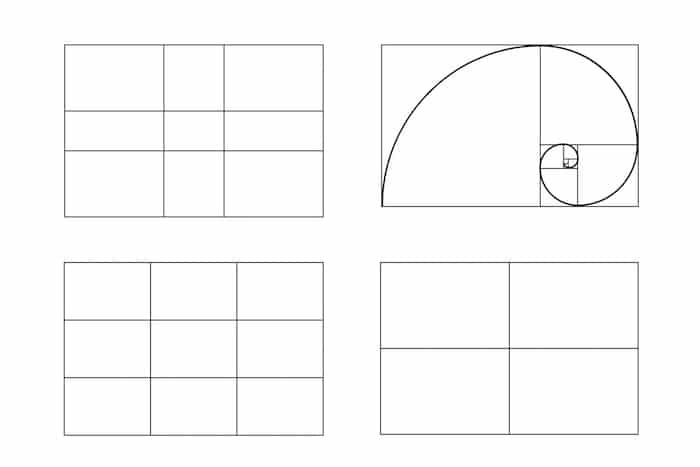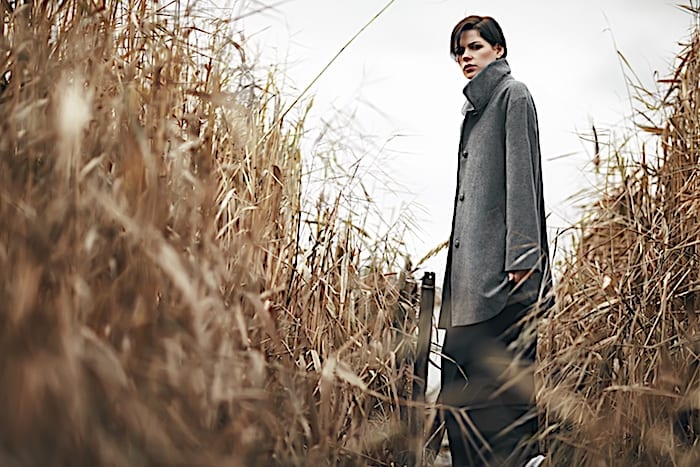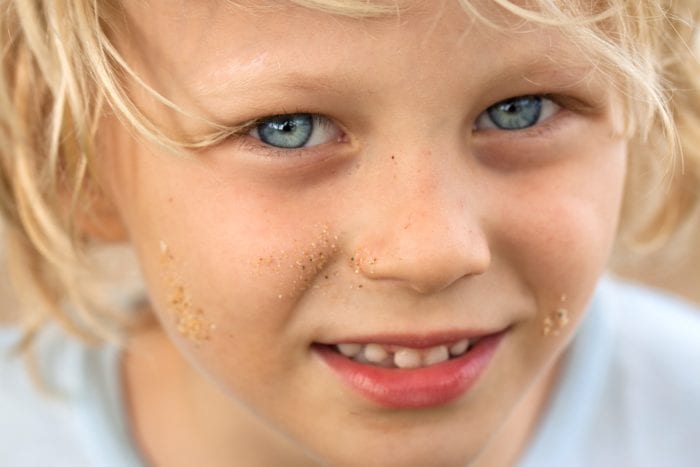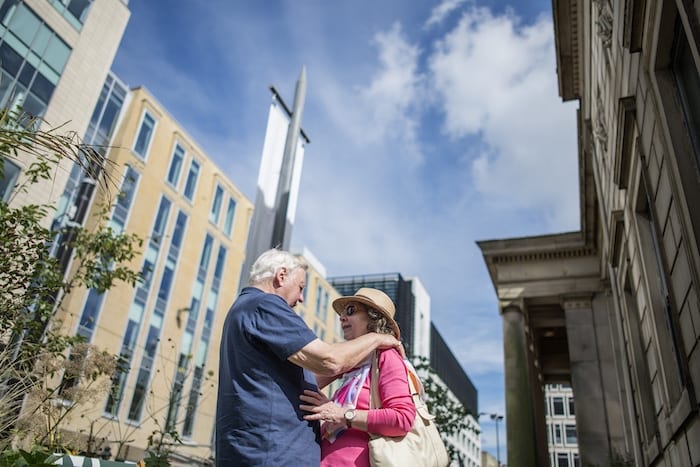The Rule of Thirds. Leading and Converging Lines. Triangles. The Rule of Threes.

You’ve probably heard expressions such as these and more time and time again when it comes to composing a photographic image, and it’s even more likely that you’ve used them in your very own imagery.
The composition of any images relies heavily on how we manipulate the viewers gaze and to do so successfully; we sometimes need to engage these rules.
However, successful photographs can break compositional rules as well as follow them.
Street Photography is a fantastic example of how photographers the world over and for a hundred years, have created a genre in which the walls of composition have been battered down and the rules wholly broken, to adhere to the flux, energy and unpredictability of everyday, real life.
Barthes, The Studium and The Punctum
Let’s focus on a little bit of photographic theory for a second. In his book Camera Lucida, Roland Barthes famously introduces the idea of the Studium and the Punctum. The Studium refers to the element of an image which initially grabs our attention. This can be a flash of colour, a particular individual or a series of shapes – in essence, the composition. The Punctum is the part of an image that goes that little bit further – that pricks or bruises us – leaving a lasting impression.
These two terms are more relevant today than they have ever been in a world of the mass and digital image and when we talk about composition and the breaking of compositional boundaries, we can relate the idea of the Studium and the Punctum. When ignoring compositional traits, we are often trying to convey something with attitude, shock value or particular gravitas. We’re trying to initiate the Punctum.
Now, I’m not saying for a second that you need to be delving deep into photographic theory before going on your next shoot. But if you want to stray from the rule of thirds and converging lines, there are a few go-to traits that you can start to engage. Here are a few to get you started.
Centring and Confrontation
It will be of no great surprise that centring a subject in the middle of your frame provides a certain confrontation.
This isn’t to say ‘confrontation’ in a negative sense but a direct sense. ‘Here it is! Warts and all.’ It’s a very simple trait often used by portrait photographers both in and out of the studio.
In a space with a white or black background – a lack of context – what use is there for popping your subject on the right hand third? When you want your subject to stare straight down the barrel and look into the soul of your viewer, centred is always the way forward.
You’re hardly rewriting the rules when using this as a starting point, but it’s a good way of getting your brain thinking a little more about positioning within the frame. It’s not all about splitting into thirds!
In the image here, a seemingly simple landscape shot is taken to a different level using centring and confrontation as well as a specific use of cropping within the frame (see below). The image was shot at a wind farm, and purposeful efforts were made to almost disguise this when shooting, paying specific reference to the base of one of the wind turbines and it’s imprint on the landscape.
Go Beyond the Frame
The photographic frame is a confine. It is a rectangle or a square, outside of which life still exists. By filling your frame with your subject, be it animal or mineral, we can create a sense of intensity and even claustrophobia.
Much like a Jenny Saville painting, this cramming of a subject into a tight space can again stir up discomfort in the viewer.
Inversely, we can create very sparse and barren scenes by filling the frame with very little indeed. Think about how you would usually want to crop an image and explore changing this. How might the inclusion and exclusion of very specific elements within the frame affect how the frame is read?
Exaggerated Angles
Throwing your angles out of whack is a very liberating thing to do. This way of shooting often comes up in street photography, as we have to shoot quickly and sometimes without looking. The angle from which you shoot is a very important part of all composition.
We generally and subconsciously recognise an image shot from eye-level, which is why changing your angle and including texture and foreground interest – in landscape images, for example – is incredibly important. It’s a way of taking us out of ourselves, out of the general relatability we have with our fellow man.
In the street shot above a distinct change in angle and centring changes how the image is portrayed. The scene is free from clutter, and the subjects sit comfortably in the middle, sharing a moment. It’s in images like this that we happily stray away from the idea of the photographer and where he/she is stood. We almost get lost as an absent observer, as if viewing a scene from a movie. Photography in this sense has the power to incite escapism.
Movement and Energy
Forget panning. Forget long exposures with water or star trails. Movement and energy is often something captured in the most exciting and shocking of images.
War and reportage photography or hard-hitting photojournalism. Often in these images, the rules of composition are completely out of the window.
Sometimes it’s complete luck – the right place at the right time. Other times it’s the keen ability to predict a situation or set up ready for something that is about to unfold.
Movement and energy are the contributing factors to images that once captured, create their compositions. Put simply, get out there and start shooting it.
There you have it. Just a few pointers that might help you to break free from those standard rules of composition. There’s aren’t to be followed all the time, just when the time calls for them.
The most important thing is that you can identify when these opportunities arise and start to implement them. As always, this will only come with practice. So good luck and happy shooting!
Find out more about our courses here
Download a Free Prospectus
Get your Free Guide To Composition here





